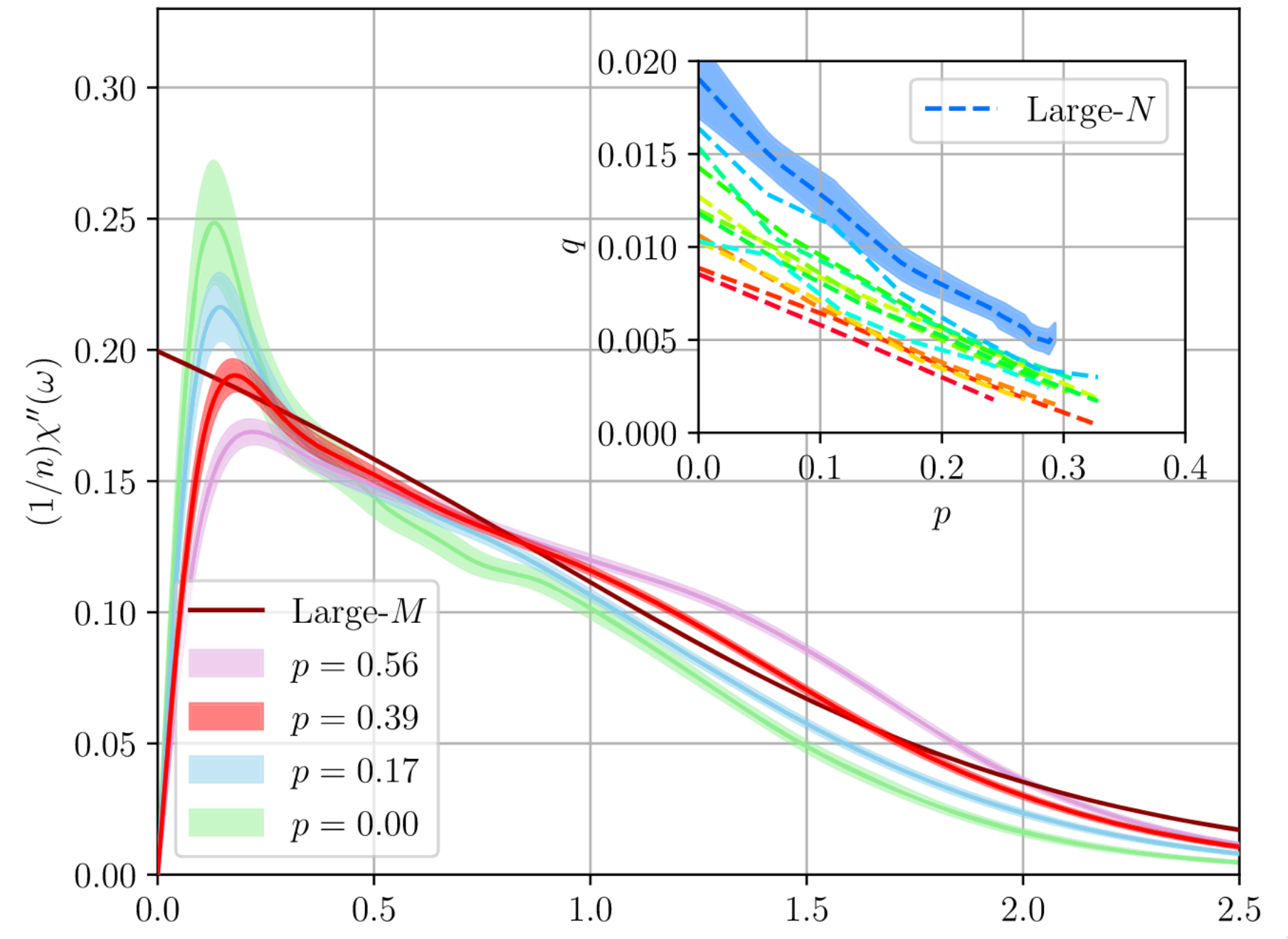Quantum phase transitions in strongly-correlated electronic systems induced by a critical level of doping are of great interest due to their conjectured relevance in describing the phase diagram of the cuprate superconductors, with an emphasis on the "strange metal" behavior observed near criticality. As a result, models that host such transitions and are either analytically or numerically tractable provide valuable insight into the nature of doping-induced criticality.
In this work, we numerically study a t-J model with random all-to-all spin exchanges and hopping. The disorder and all-to-all connectivity permits the use of extended dynamical mean-field theory (EDMFT) as an exact tool for calculating disorder-averaged observables. This is the approach used in a companion paper, here, which finds a doping-induced transition between a spin glass at low doping and a Fermi liquid at high doping. However, these EDMFT studies cannot probe the spin glass phase directly, and moreover a low-temperature analysis is prohibited by the sign problem. We circumvent these issues by analyzing the all-to-all t-J model directly using exact diagonalization (ED).
Our analysis confirms prior EDMFT predictions of a spin glass to Fermi liquid transition at a critical doping \(p_c \approx 1/3 \), signaled by both a vanishing of spin glass order as well as a maximum in entropy and charge susceptibility. An especially insightful quantity is the spin spectral function, plotted below for a range of dopings:

The low frequency peak is indicative of spin glass order, from which one can extract the Edwards-Anderson order parameter \(q\). This quantity vanishes around a critical doping \(p_c \approx 1/3 \). Remarkably, we observe that the background spectral weight is well-fit by the original spin liquid solution of a random all-to-all Heisenberg model, see Fig. 2 in the original paper by Sachdev and Ye. This state was originally conjectured to give the ground state at zero doping - while numerical studies later confirmed the presence of spin glass order, we find that this spin liquid state still does an excellent job of describing the low-frequency behavior. Moreover, when the spin glass peak vanishes at \(p_c\), the spectral function closely resembles the SY solution, consistent with theoretical models of this critical point.